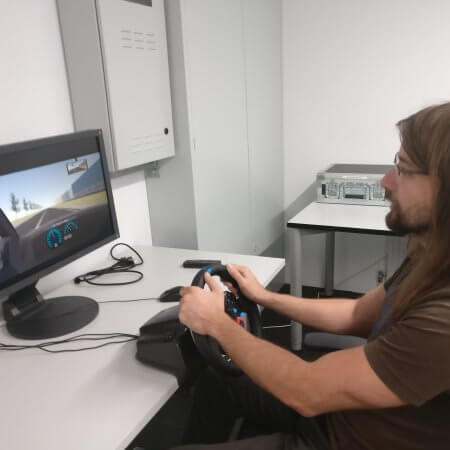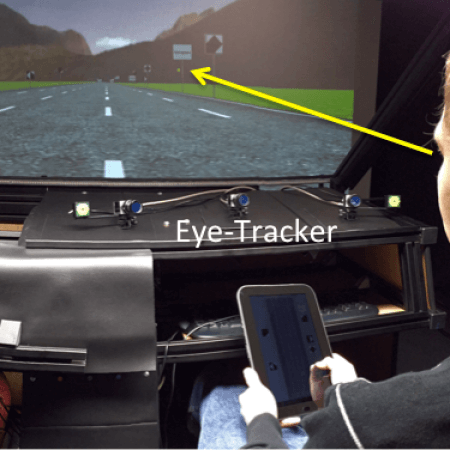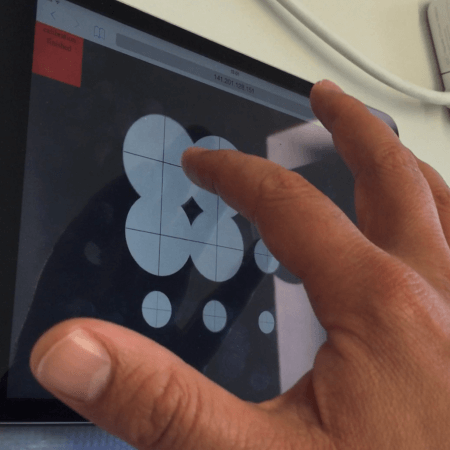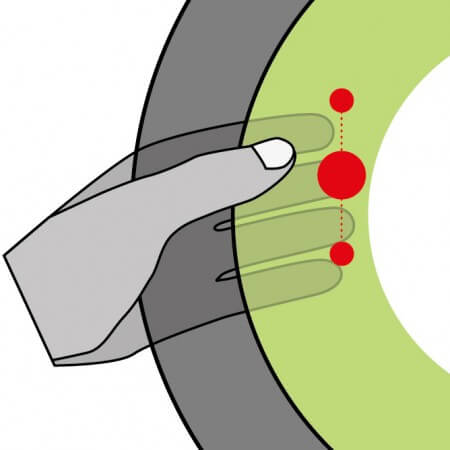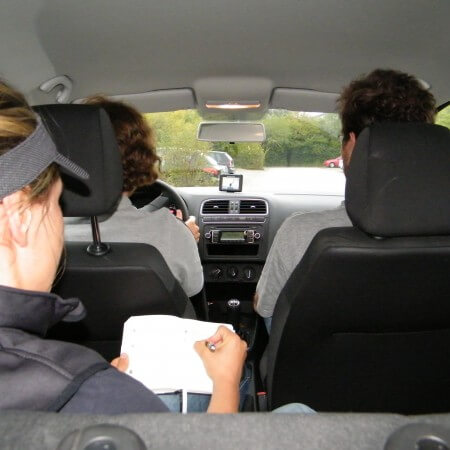Cars are an important factor of our daily lives since they bring mobility and freedom to many people. To some, cars are status symbols, to others a necessity. Much of our planet’s surface is devoted to vehicles. Due to technological developments, cars have undergone a dramatic change: novel information and communication technologies have been introduced in the automotive context; electric vehicles have been introduced as a new branch for car manufacturers; car-sharing platforms have become a major phenomena; autonomous vehicles have been presented and are likely to change how we interact with our cars in the future. These developments change the interaction between humans and their cars. Within the Car Experience Lab, we tackle these questions in order to increase safety and to augment the overall user experience (UX) for drivers and passengers.
When we look into the development of interfaces inside cars, we can observe a movement towards the integration of evermore features for drivers. Car manufacturers are developing novel interfaces to support drivers in their primary task (i.e., driving) but also try to integrate new services for drivers and passengers into their car. This bears the risk that cars are cluttered with interaction elements that may make driving less safe due to the distraction of the driver. Thereby, OEMs (Original Equipment Manufacturers) still focus primarily on the driver. Passengers and their role are rather neglected. The overall vision of the Car Experience Lab is to enhance the interaction space in the car holistically taking experiences of all passengers and the influences of various context parameters into account.
In doing so, we have to address several questions:
- How can we design the interaction between drivers and their vehicles in a way that reduces distraction while simultaneously providing a rich set of desired features?
- How can we utilize context factors in order to tailor interaction possibilities for drivers in specific situations?
- How can we make use of novel interaction techniques (e.g., gaze interaction) in order to minimize driver distraction?
- How can we make use of persuasive technologies in order to increase safe and/or economic driving behavior?
- How can we utilize in-car collaboration between drivers and passengers?
- What potentials and risks for user experience arise with the advent of autonomous vehicles?
- How to design safe hand- and takeovers between a driver and an automated vehicle?
- How to increase situation awareness in a self-driving car?
- How to fight de-skilling over time with the advent of autonomous vehicles?
With our partners from academia and industry, we investigate these and other questions. Through the lenses of Human-Computer-Interaction (HCI) and Interaction Design (IxD), we analyze the automotive context, design and develop novel interaction approaches, and evaluate in-car systems. Analyses include ethnographic studies in the field in order to gain a rich and holistic picture of the driving context. Thereby, we specifically focus not only on the driver but also on passengers inside the car. The interaction design includes the steering wheel as interaction design space, gaze-interaction for drivers and passengers, shape changing interfaces, and ambient light visualizations. Evaluation is done with our own interaction design but also with state-of-the-art in-car systems. One of our main foci lies in the assessment of driver distraction outside the lab.
Outputs of our research efforts are manifold. They range from car UX patterns to inform automotive interaction designers to functional prototypes. From a methodological point of view, we use, adapt, and develop new methods to study the car both in the lab and in the field. We own both low- and high-fidelity driving simulation environments. Our mobile lab enables us to do research both on test tracks, as well as under real traffic conditions. Our expertise lays in eye-tracking and driving performance measurements, as well as subjective user experience analysis.
Main Research Topics
- Lab Infrastructure: development of mixed-fidelity laboratory environments and mobile lab infrastructure in order for analysis and evaluation
- Driver Distraction: research driver distraction and development of an distraction evaluation toolbox
- Car UX Patterns: development of user experience design patterns for the automotive context
- Multimodal Driver Interfaces: conceptualize and prototype driver interaction approaches with a focus on multi-modal and natural interaction
- (Driver) Persuasion: envision, develop, and analyze persuasive systems in order to change driving behavior
- Autonomous Vehicles and UX: research potentials and challenges of future (semi-)autonomous vehicles with a focus on user experience, user acceptance, situation awreness, and de-skilling
- In-car Collaboration: research the potentials of in-car collaboration between drivers and passengers for a richer and safer driving experience
- In-car Entertainment: development of novel context dependent in-car entertainment solutions that foster UX for all passengers

